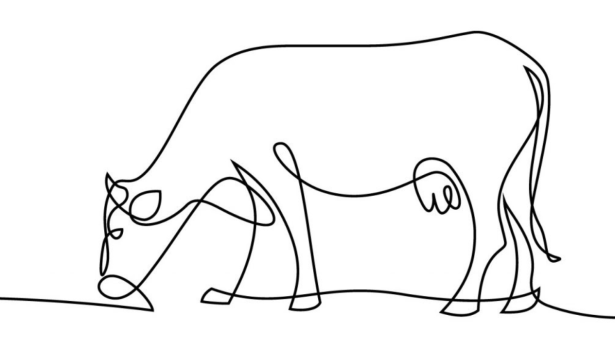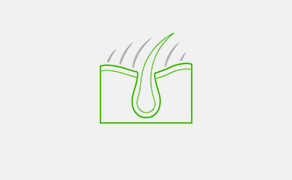Jak działa psi węch? Od zapachu do emocji
Piśmiennictwo
- Lasa J., Browarska-Walczowska A.: Zmysł węchu, kryminalistyka, metody analityczne. Raport Nr 2/POP, Instytut Fizyki Jądrowej im. Henryka Niewodniczańskiego, Kraków, 2003.
- Karlson P., Lüscher M.: ‘Pheromones’: a new term for a class of biologically active substances. „Nature”, 1959, 183.
- Wyatt T.D.: Pheromones and Animal Behaviour: Communication by Smell and Taste. Cambridge University Press, 2003.
- Alcock J.: Animal behavior. 9th ed, Arizona State University, USA, Massachusetts 2009.
- Konopski L., Koberda M.: Feromony człowieka. Wydawnictwo Naukowe Scholar, Warszawa 2003.
- Stitzel S.E., Aernecke M.J., Walt D.R.: Artificial Noses. „Annual Review of Biomedical Engineering”, 2011, 13, 1-25.
- Swaney W.T., Keverne E.B.: The evolution of pheromonal communication. „Behavioural brain research”, 2009, 200, 2, 239-247.
- Krzymowski T., Przała J.: Fizjologia zwierząt. Wydawnictwo Rolnicze i leśne, Warszawa 2005.
- Rapiejko P., Zielnik-Jurkiewicz B., Wojdas A., Ratajczak J., Jurkiewicz D.: Występowanie narządu lemieszowo-nosowego u ludzi dorosłych. Otolaryngologia polska. „The Polish Otolaryngology”, 2007, 61. 581-584. DOI: 10.1016/S0030-6657(07)70489-4.
- Jacobson L., Trotier D., Døving K.B.: Anatomical description of a new organ in the nose of domesticated animals by Ludvig Jacobson (1813). Laboratoire de Neurobiologie Sensorielle, Ecole Pratique des Hautes Etudes, Massy, France. „Chemical Senses”,1999.
- McGann J.P.: Poor human olfaction is a 19th-century myth. „Science”, 2017, 356, 6338, 7263.
- Salazar I., Rueda A., Cifuentes J. M.: Anatomy of the vomeronasal organ in the dog. „Folia Morphologica”, 1984, 32, 4, 331-341.
- Salazar I., Barber P.C., Cifuentes J.M.: Anatomical and immunohistological demonstration of the primary neural connections of the vomeronasal organ in the dog. „The Anatomical Record”, 1992, 233, 2, 309-313.
- Dzięcioł M. et al.: MRI Features of the Vomeronasal Organ in Dogs (Canis Familiaris). „Frontiers in Veterinary Science”, 2020, 7, 159.
- Booth K.K.: The role of the VNO on the regulation of parental and reproductive behaviors in female small ruminants (Znaczenie narządu Jacobsona w regulacji zachowań rodzicielskich oraz rozrodczych u samic małych przeżuwaczy) [W:] Sympozjum Mechanizmy zachowań zwierząt oraz możliwości ich modelowania. Wrocław, 9.05.2013.
- Asproni P. et al.: Pathology and behaviour in feline medicine: investigating the link between vomeronasalitis and aggression. „Journal of Feline Medicine and Surgery”, 2016, 18, 12, 997-1002.
- Moran D.T., Jafek B.W., Rowley J.C.: The vomeronasal (Jacobson’s) organ in man: ultrastructure and frequency of occurrence. „J Steroid Biochem Mol BioL”, 1991, 39, 545-552.
- Stensaas L.J., Lavker R.M., Monti-Bloch L., Grosser B.I., Berliner D.L.: Ultrastructure of the human vomeronasal organ. „J Steroid Biochem Mol Biol”, 1991, 39, 553-560.
- Boehm N., Gasser B.: Sensory receptor-like cells in the human foetal vomeronasal organ. „Neuroreport”, 1993, 4, 867-870.
- Trotier D., Døving K.B.: Functional role of receptor neurons in encoding olfactory information. „J Neurobiol”, 1996, 30, 58-66.
- Trotier D., Eloit C., Wassef M., Talmain G., Bensimon J.L., Døving K.B. et al.: The vomeronasal cavity in adult humans. „Chem Senses”, 2000, 25, 369-380.
- Witt M., Hummel T.: Vomeronasal versus olfactory epithelium: is there a cellular basis for human vomeronasal perception? „Int Rev Cytol”, 2006, 248, 209-259.
- Stoyanov G., Moneva K., Sapundzhiev N., Tonchev A.B.: The vomeronasal organ – incidence in a Bulgarian population. „J Laryngol Otol”, 2016, 130, 344-347.
- Vaglio S.: Chemical communication and mother-infant recognition. „Communicative & Integrative Biology”, 2009, 2, 3, 279-281.
- Zalesska-Kręcicka M., Kręcicki T.: Zarys otolaryngologii. [W:] Podręcznik dla studentów i lekarzy. Akademia Medyczna, Wrocław 2008.
- Potargowicz E.: Węch – niedoceniany zmysł człowieka. [W:] Postępy Higieny Medycyny Doświadczalnej. Katedra Fizjologii Doświadczalnej i Klinicznej Uniwersytetu Medycznego w Łodzi, 2008.
- Białaczewski L.: Nagroda Nobla za 2004; odkrycie genów receptorów węchowych. „Otorynolaryngologia”, 2005, 4.
- Sadowski B.: Biologiczne mechanizmy zachowania się ludzi i zwierząt. PWN, Warszawa 2007.
- Skangiel-Kramska J., Rogozińska K.: Zmysł węchu — kodowanie zapachów. Nagroda Nobla z fizjologii lub medycyny w 2004 roku. „Kosmos. Problemy Nauk Biologicznych”, 2005, 54 (2-3, 267-268), 149-154.
- Rapiejko P., Zielnik-Jurkiewicz B., Jurkiewicz D.: Vomeronasal organ occurrence in adult humans. Ann Universit Marie Curie-Skłodowskiej Sectio D Medicina, 2005.
- Rapiejko P.: Zmysł węchu. „The Sense of Smell Alergoprofil”, 2006.
- Dorries K.M., Adkins-Regan K., Halpern B.P.: Sensitivity and behavioral responses to the pheromone androstenone are not mediated by the vomeronasal organ in domestic pigs. „Brain, Behavior and Evolution”, 1997, 49, 1, 53-62.
- Asproni P., Cozzi A., Mainau E., Temple D., Manteca X., Bienboire-Frosini C. et al.: First description of vomeronasal organ inflammatory changes in pigs. [In:] ECAWBM-IRSEA International Congress and Workshops on Semiochemistry and Management of Animal Populations. Apt, 2014, 131.
- Malnick B., Godfrey P.A., Buck L.B.: The human olfactory receptor gene family. „Proc Natl Acad Sci USA”, 2004, 101, 2584-2589.
- Sadowski B., Chmurzyński J.A.: Biologiczne mechanizmy zachowania. Państwowe Wydawnictwo Naukowe, 1989.
- Rombaux P., Duprez T., Hummel T.: Olfactory bulb volume in the clinical assessment of olfactory dysfunction. „Rhinology”, 2009, 47, 3‑9.
- Savic I.: Imaging of brain activation by odorants in humans. „Curr Opin Neurobiol”, 2002, 12, 455‑461.
- Nguyen A.D., Shenton M.E., Levitt J.J.: Olfactory dysfunction in schizophrenia: a review of neuroanatomy and psychophysiological measurements. „Harv Rev Psychiatry”, 2010, 18, 279‑292.
- Gadbois S., Reeve C.: Canine Olfaction: Scent, Sign, and Situation. „Domestic Dog Cogn and Beh”, 2014, 3-29.
- Marchlewska-Koj A.: Feromony ssaków : ich rola w fizjologii i zachowaniu. „Polska Akademia Umiejętności”, 2011, 137.
- Bhatnagar K., Smith T.: The human vomeronasal organ. III. Postnatal development from infancy to the ninth decade. „Journal of anatomy”, 2001, 199, 289-302. DOI: 10.1046/j.1469-7580.2001.19930289.x.
- Trotier D.: Vomeronasal organ and human pheromones. „European annals of otorhinolaryngology, head and neck diseases”, 2011, 128, 184-90. DOI: 10.1016/j.anorl.2010.11.008.
dr Agata Kokocińska-Kusiak
Instytut Nauk o Zwierzętach
Wydział Hodowli, Bioinżynierii i Ochrony Zwierząt
Szkoła Główna Gospodarstwa Wiejskiego w Warszawa
ul. Ciszewskiego 8, 02-786 Warszawa
Mogą zainteresować Cię również
Znajdź swoją kategorię
2828 praktycznych artykułów - 324 ekspertów - 22 kategorii tematycznych
Weterynaria w Terenie

Nowoczesne metody diagnostyki patogenów mastitis. Wpływ ujemnego bilansu energii na zdolności reprodukcyjne krów mlecznych w okresie okołoporodowym
Piśmiennictwo lek. wet. Grzegorz Wypychowskispecjalista ds. rozrodu zwierząt Facebook0Tweet0LinkedIn0

Nowoczesne metody diagnostyki patogenów mastitis. Wpływ ujemnego bilansu energii na zdolności reprodukcyjne krów mlecznych w okresie okołoporodowym
Piśmiennictwo lek. wet. Grzegorz Wypychowskispecjalista ds. rozrodu zwierząt Facebook0Tweet0LinkedIn0

Czynniki wpływające na kolonizację mikrobiomu i dojrzałość układu pokarmowego prosiąt oraz jego prawidłowe funkcjonowanie
Piśmiennictwo dr inż. Piotr Nowak Facebook0Tweet0LinkedIn0

Opieka stomatologiczna nad starszymi końmi
Piśmiennictwo lek. wet. Katarzyna FerenzGabinet weterynaryjny Końskie Zdrowie we Wrocławiu Facebook0Tweet0LinkedIn0

Praktyka w terenie – jak zabezpieczyć się na wypadek stanów zagrożenia życia lub zdrowia zwierzęcia
Piśmiennictwo mec. Anna SłowińskaVox Poland Pomoc PrawnaSzczecin Facebook0Tweet0LinkedIn0

Wiek ma ogromne znaczenie podczas stawiania diagnozy
Lek. wet. Justyna Domagała tytuł inżyniera zootechniki uzyskała w 2016 r., a tytuł lekarza weterynarii – w 2019 r. na Uniwersytecie Przyrodniczym we Wrocławiu. Po studiach swoją wiedzę poszerzała podczas stażu w Szpitalu dla Koni Equivet, w którym później uzyskała zatrudnienie. W latach 2021-2024 swoją pracę skupiała na internistycznym leczeniu koni oraz pogłębianiu wiedzy na […]

Echa 32. Kongresu Bujatrycznego w Cancun
Profilaktyka Kongres był również okazją do zaprezentowania kilku przełomowych produktów immunologicznych, które mają szansę wprowadzić na nowe tory prewencję znanych od lat jednostek chorobowych, sprawiających wiele kłopotów z punktu widzenia odchowu cieląt czy rozrodu. Mowa tu konkretnie o trzech nowych szczepionkach mających zastosowanie w profilaktyce Mycoplasma bovis, Cryptosporidium parvum czy wirusowej biegunki bydła (BVD). Nie […]




























































